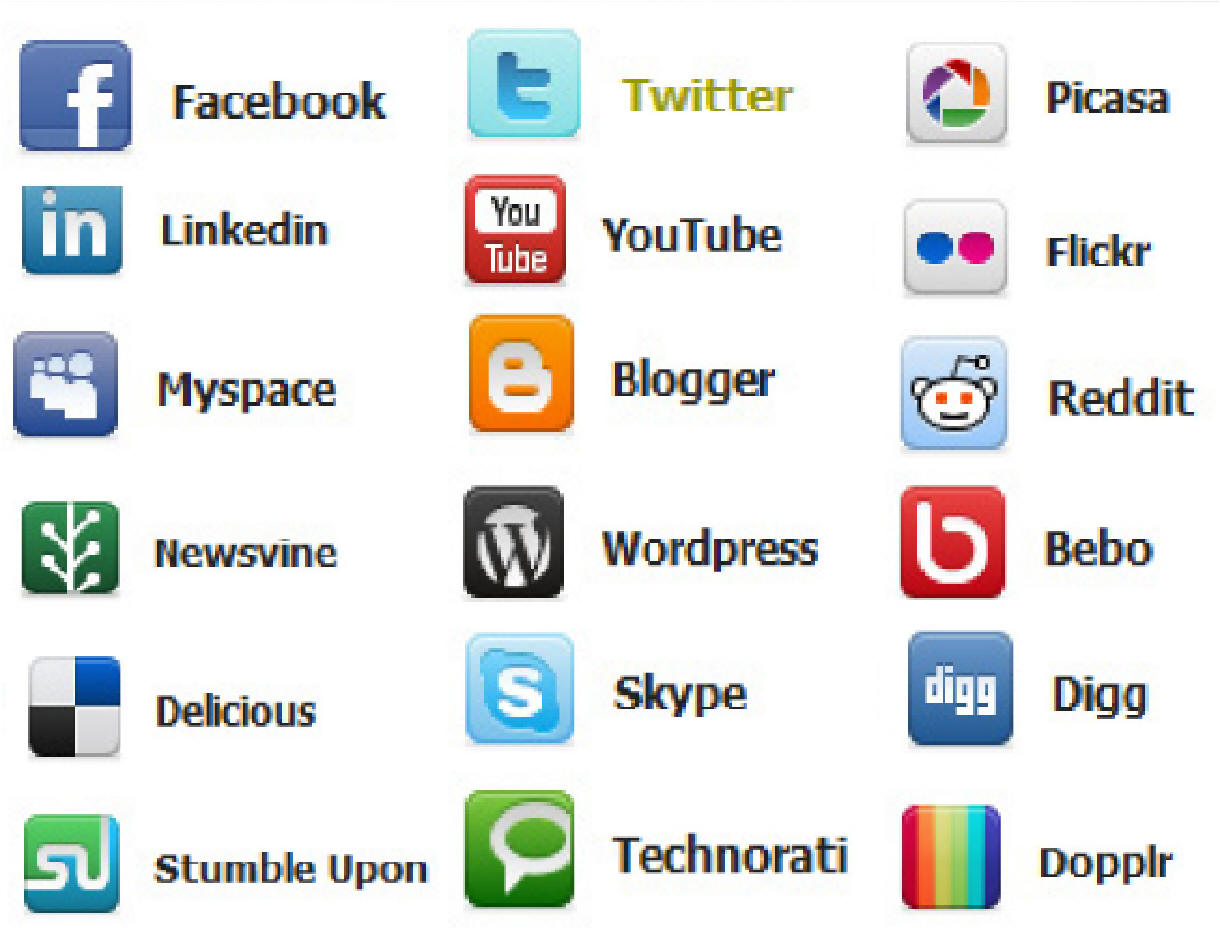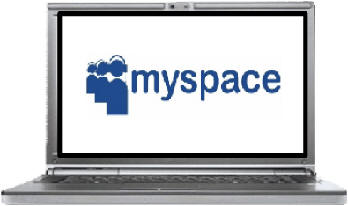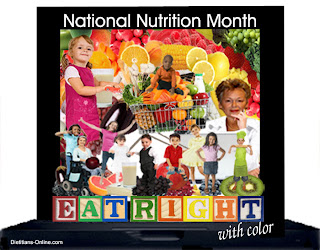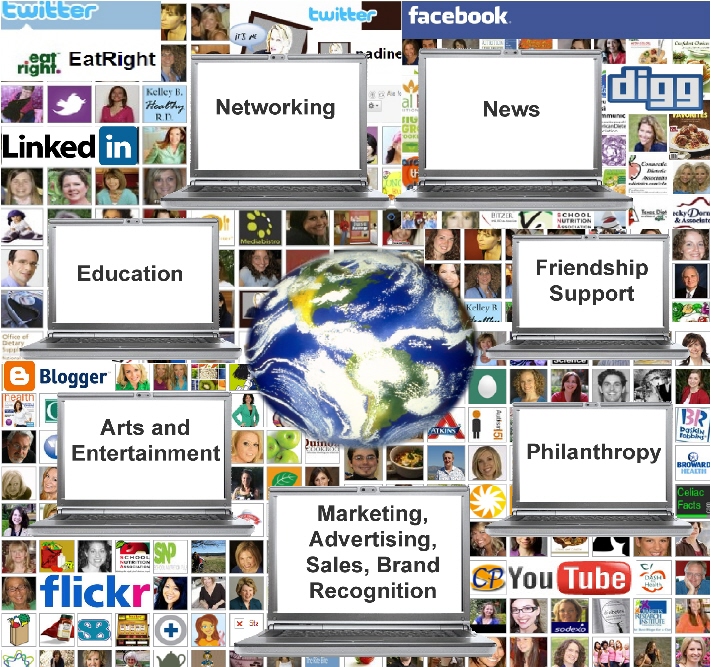Nutrition Label Blooper
Thursday, April 18, 2019
Saturday, April 6, 2019
World Health Day - Universal Health Care For All
About WHO
Who we are, what we do
"Our goal is to build a better, healthier future for people all over the world. Working through offices in more than 150 countries, WHO staff work side by side with governments and other partners to ensure the highest attainable level of health for all people.
Together we strive to combat diseases – infectious diseases like influenza and HIV and noncommunicable ones like cancer and heart disease. We help mothers and children survive and thrive so they can look forward to a healthy old age. We ensure the safety of the air people breathe, the food they eat, the water they drink – and the medicines and vaccines they need."
Together we strive to combat diseases – infectious diseases like influenza and HIV and noncommunicable ones like cancer and heart disease. We help mothers and children survive and thrive so they can look forward to a healthy old age. We ensure the safety of the air people breathe, the food they eat, the water they drink – and the medicines and vaccines they need."
World Health Day
Key messages for World Health Day
World Health Day Messages
2. No one should have to choose between good health and other life necessities.
3. UHC is key to people’s and nations’ health and well-being.
UHC is feasible. Some countries have made great progress. Their challenge is to maintain coverage to meet people’s expectations.
UHC is feasible. Some countries have made great progress. Their challenge is to maintain coverage to meet people’s expectations.
4. All countries will approach UHC in different ways: there is no one size fits all. But every country can do something to advance UHC.
Friday, March 1, 2019
National Nutrition Month 2019
National Nutrition Month® is an annual nutrition education and information campaign created by the Academy of Nutrition and Dietetics. The campaign is celebrated each year during the month of March, The focus is on the importance of making informed food choices and developing sound eating and physical activity habits. In addition, National Nutrition Month® promotes the Academy and its members to the public and the media as the most valuable and credible source of timely, scientifically-based food and nutrition information.
2019 NNM Campaign
Registered Dietitian Nutritionist Day is also celebrated during National Nutrition Month®, on the second Wednesday in March. This year it is March 13, 2019. The occasion increases awareness of registered dietitian nutritionists (RDN) as the indispensable providers of food and nutrition services while recognizing both RDNs and nutrition and dietetic technicians, registered for their commitment to helping people enjoy healthy lives.
2019 NNM Campaign
In an effort to accommodate the diverse areas in which National Nutrition Month® is celebrated and allow greater flexibility in the promotion of healthful messages, this year National Nutrition Month® will be honored as its own theme. This will allow the NNM campaign to focus on its original purpose, which is: "To increase the public's awareness of the importance of good nutrition and position Academy members as the authorities in nutrition."
During National Nutrition Month®, help the Academy achieve its vision of a world where all people thrive through the transformative power of food and nutrition.
Thursday, February 21, 2019
National Nutrition Month,
“Eat Right, Your Way, Every Day”
“Eat Right, Your Way, Every Day”
I enjoy playing with words and seeing if I can come up with a meaningful world that goes with the National Nutrition Month® Theme, “Eat Right, Your Way, Every Day.”
With some juggling and creativity, here is what I came up with.
National Nutrition Month® (NNM) is more than a game; it is a "nutrition education and information campaign created annually by the Academy of Nutrition and Dietetics (Academy). The campaign focuses attention on the importance of making informed food choices and developing sound eating and physical activity habits."
With some juggling and creativity, here is what I came up with.
National Nutrition Month® (NNM) is more than a game; it is a "nutrition education and information campaign created annually by the Academy of Nutrition and Dietetics (Academy). The campaign focuses attention on the importance of making informed food choices and developing sound eating and physical activity habits."
National Nutrition Month
Go Further with Food
Go Further with Food
National Nutrition Month® 2018 is a nutrition education and information campaign created annually in March by the Academy of Nutrition and Dietetics. The campaign focuses attention on the importance of making informed food choices and developing sound eating and physical activity habits.
2018 NNM Theme - "Go Further with Food". The foods you choose can make a real difference. Preparing your foods to go further, by planning meals and snacks in advance can also help to reduce food loss and waste. This year's theme for National Nutrition Month® encourages us to achieve the numerous benefits healthy eating habits offer, but it also urges us to find ways to cut back on food waste. Learning how to manage food resources at home will help you "Go Further with Food" while saving both nutrients and money. Academy of Nutrition and Dietetics https://www.eatright.org/
2018 NNM Theme - "Go Further with Food". The foods you choose can make a real difference. Preparing your foods to go further, by planning meals and snacks in advance can also help to reduce food loss and waste. This year's theme for National Nutrition Month® encourages us to achieve the numerous benefits healthy eating habits offer, but it also urges us to find ways to cut back on food waste. Learning how to manage food resources at home will help you "Go Further with Food" while saving both nutrients and money. Academy of Nutrition and Dietetics https://www.eatright.org/
National Nutrition Month, Preview
March is National Nutrition Month® (NNM), a nutrition education and information campaign created annually by the American Dietetic Association (ADA). The campaign focuses attention on the importance of making informed food choices and developing sound eating and physical activity habits. The March 2011 theme for National Nutrition Month® is "Eat Right with Color."
My staff and I started the project in September 2010, when ADA announced the theme. Over the next five months, we would take over 600 photographs of colorful foods in order to create the March presentation for NNM. Many of the photographs are available for purchase with the proceeds going to special need young adults. Contact Dr. Sandra Frank for additional information (recipenews@gmail.com).
The theme explores the health benefits associated with eating foods of many colors. "Eating a rainbow" refers to including color diversity in your meals and food choices, so as to enhance your intake of a wide range of nutrients. During the month of March, we will explore the colors of foods and their benefits.
Red and Pink Foods
Hosts: Robert (Red) and Pam (Pink)
Apples, Beets, Cayenne, Cherries, Cranberries, Guava, Kidney Beans, Papaya, Pink Beans, Pink/Red Grapefruit, Pomegranates, Radicchio, Radishes, Raspberries, Red Bell Peppers, Red Cabbages, Red Chili Peppers, Red Corn, Red Currants, Red Grapes, Red Onions, Red Pears, Red Peppers, Red Plums, Red Potatoes, Red Tomatoes, Rhubarb, Strawberries, Tomatoes, Watermelons
Green Foods
Host: Grace (Green)
Alfalfa, Artichokes, Arugula, Asparagus, Avocado, Bok Choy, Broccoli, Broccoli rabe, Brussels Sprouts, Celery, Chives, Collard Greens, Cucumbers, Dandelion Greens, Edamame, Endive, Fennel, Green apples, Green Beans, Green cabbage, Green Grapes, Green Olives, Green Onion, Green Pears, Green Peas, Green Pepper, Green Tomatoes, Honeydew, Kale, Kiwi, Leeks, Lettuce, Limes, Mint, Okra, Oregano, Parsley, Pistachios, Snow Peas, Spinach, Sugar snap peas, Swiss Chard, Tarragon, Tomatillo, Wasabi, Watercress, Zucchini
Blue and Purple Foods
Hosts: Brooke (Blue); Betty (Light Blue); and Peggy (Purple)
Blue Grapes, Blue and Purple Potatoes, Blueberries, Dried Plums, Plums, Eggplant, Pomegranates, Elderberries, Juniper Berries, Kelp (Seaweed), Purple Belgian Endive, Purple Cabbage, Purple Figs
Yellow and Orange Foods
Hosts: Yoko (Yellow), York (Yellow) and Oliver (Orange)
Apricots, Bananas, Butternut Squash, Cantaloupe, Carrots, Cheddar Cheese, Citrus Fruits, Clementines, Coriander, Corn, Creamsicle, Dill, Garbanzo Beans, Golden Apples, Golden Flax Seed, Golden Raisins, Grapefruit, Honey, Lemon, Lemongrass, Mandarin Oranges, Mangoes, Nectarines, Orange Jello, Orange Peppers, Orange Tomatoes, Oranges, Papaya, Parsnips, Peaches, Pears, Persimmons, Pineapple, Pumpkin, Rutabagas, Saffron, Salmon, Spaghetti Squash, Squash Blossoms, Sweet Corn, Sweet Potatoes, Tangerines, Whole Grains, Yams, Yellow Apples, Yellow Beans, Yellow Peppers, Yellow Summer Squash, Yellow Wax Beans
White and Black Foods
Hosts: Wendy (White) and Brian (Black)
White: Cauliflower, Coconut, Garlic, Ginger, Green Onions, Scallions, Horseradish, Jicama, Kohlrabi, Leeks, Millet, Mushrooms, Onions, Parsnips, Quinoa, Shallots, Soy Products, Sunflower Seeds, Tofu, Turnips, White Beans, White Corn, White Sesame Seeds
Black: Black Beans, Black Cherries, Black Currants, Black Mushrooms, Black Olives, Black Quinoa, Black Raspberry, Black Rice, Black Sesame Seeds, Black Soybeans, Blackberries, Boysenberries, Prunes, Raisins, Seaweeds, Tamari (Soy Sauce)
Black: Black Beans, Black Cherries, Black Currants, Black Mushrooms, Black Olives, Black Quinoa, Black Raspberry, Black Rice, Black Sesame Seeds, Black Soybeans, Blackberries, Boysenberries, Prunes, Raisins, Seaweeds, Tamari (Soy Sauce)
Prepared by
http://www.dietitians-online.com/
http://www.weighing-success.com/
Wellness News (www.weighing-success.com/WellnessNews.html)
http://www.wheelchair-connection.com/
Sandra Frank, Ed.D, RD, LDN
Jake Frank
Lance Li
http://www.dietitians-online.com/
http://www.weighing-success.com/
Wellness News (www.weighing-success.com/WellnessNews.html)
http://www.wheelchair-connection.com/
Sandra Frank, Ed.D, RD, LDN
Jake Frank
Lance Li
Jonathan Cruz
Sunday, February 10, 2019
National Jell-O Week
February is National Snack Month
Jelly or jello comes from gelatin. The Gelatin found in Jell-O comes from the collagen in cow or pig bones, hooves and connective tissues. Gelatin is not recommended for vegetarians. In 1923 D-Zerta became the first sugar-free gelatin dessert.
Agar or agar-agar is a gelatinous substance derived from agarophyte (red algae). Agar is used as an ingredient in desserts, a vegetarian gelatin substitute, a thickener for soups, in jellies, ice cream and other desserts. Agar-agar is approximately 80% fiber and serves to regulate bowel movements.
Agar-agar is sold in packages as washed and dried strips or in powdered form. For making jelly, it is boiled in water until the solids dissolve. Sweetener, flavouring, colouring, fruit or vegetables are then added and the liquid is poured into molds to be served as desserts and vegetable aspics, or incorporated with other desserts. Reference: Wikipedia
Liz Hickok is a San Francisco-based artist known for her work in Jell-O. Her artwork is exhibited across the country and internationally. Hickok’s San Francisco in Jell-O has been covered by The New York Times, Harper’s, Gastronomica, and appeared on the cover of Artweek. Hickok also appeared on the Food Network Awards Show, where she won an award for “Best Use of Food as Art Medium.” Click the link to view Liz Hickok portfolio
As a dietitian, gelatin became known as a stable for clear liquid and full-liquid diets. It is often recommended for vomiting as a means to replace fluid loss and provide calories. The sugar-free gelatin became a favorite for individuals as a "Free Food" on weight-loss programs and diabetic diets. Gelatin is considered a fluid and therefore must be calculated when a patient is placed on a fluid restriction.
Jell-O Commercial
2010
LinksJell-O Recipes
7 Wacky Jell-O Molds from Around the World
Wednesday, January 9, 2019
Tuesday, November 6, 2018
Saturday, June 30, 2018
Social Media Dietitians
"Making the World a Healthier Place"
Social media has become an integral part of modern society. There are general social networks with user bases larger than the population of most countries. There are niche sites for virtually every special interest out there. There are sites to share photos, videos, status updates, sites for meeting new people and sites to connect with old friends. It seems there are social solutions to just about every need.
- Cameron Chapman, written exclusively for WDD1
Social Media is the ability to Communicate and Interact with people of similar interests throughout the world by means of the World Wide Web (Web for short). Social Media is still in its infancy, but currently it is being used in numerous areas, such as:
Networking
Education
News
Arts and Entertainment
Marketing, Advertising and Sales
Brand Recognition
Philanthropy
Friendship and Support
Education
News
Arts and Entertainment
Marketing, Advertising and Sales
Brand Recognition
Philanthropy
Friendship and Support
Social Media History

The history is short, but the growth massive. In December 1995 about 16 million people (0.4% World Population) were using the Web. By September 2010 the number grew to 1,971 million users (28.8% World Population) 2.
Social Media has become a major force in communication utilized by individuals, women, men, children, teenagers, parents, grandparents, families, media, professional associations, educators, health professionals, government agencies, business, industry, advertising, marketing, public relations, charitable affiliations, religious organizations, support groups, artists and entertainers. The impact is at the local, statewide, national and international levels.
Significant Events in the Development of Social Media
Significant Events in the Development of Social Media
1965 The first network experiment was conducted.
1981 IBM creates its first Personal Computer; Microsoft creates DOS.
1983 DNS (Domain Name System) is designed
1987 10,000 hosts on the Internet; 25 million PCs sold in US
1989 100,000 hosts on Internet.
1991, August 6th the World Wide Web becomes public.
2000, February 10,000,000 domain names have been registered
2000, September 20,000,000 websites on the Internet, numbers doubled since February 2000
2003 LinkedIn founded.
MySpace founded.
2004 Zuckerberg launches "Thefacebook"
2005 YouTube.com launches
2006 Twitter is created by Jack Dorsey
Estimated 92 million Web sites online
2010 Twitter has grown worldwide and currently has more than 100 million users
2010, July Facebook has more than 500 million active users
1981 IBM creates its first Personal Computer; Microsoft creates DOS.
1983 DNS (Domain Name System) is designed
1987 10,000 hosts on the Internet; 25 million PCs sold in US
1989 100,000 hosts on Internet.
1991, August 6th the World Wide Web becomes public.
2000, February 10,000,000 domain names have been registered
2000, September 20,000,000 websites on the Internet, numbers doubled since February 2000
2003 LinkedIn founded.
MySpace founded.
2004 Zuckerberg launches "Thefacebook"
2005 YouTube.com launches
2006 Twitter is created by Jack Dorsey
Estimated 92 million Web sites online
2010 Twitter has grown worldwide and currently has more than 100 million users
2010, July Facebook has more than 500 million active users
 LinkedIn was founded in 2003 and was one of the first social networks devoted to business. Originally, LinkedIn allowed users to post a profile and to interact through private messaging. Gradually, other features have been added, including groups, question and answer forums, and advanced profile features, including real-time updates.
LinkedIn was founded in 2003 and was one of the first social networks devoted to business. Originally, LinkedIn allowed users to post a profile and to interact through private messaging. Gradually, other features have been added, including groups, question and answer forums, and advanced profile features, including real-time updates.As of November 2, 2010, LinkedIn had more than 80 million registered users, spanning more than 200 countries and territories worldwide. Quantcast reports LinkedIn has 21.4 million monthly unique U.S. visitors and 47.6 million globally.

MySpace.com was founded in 2003 and by 2006 had grown to be one of the most popular social networks. It offers a variety of tools and features, including blogging and instant messaging. Due to the competition from Facebook, MySpace shifted its focus to social entertainment (sharing music, movie and TV-related content). It now has some 125 million users but with decreasing traffic (2010). Fastest growing demographics are 18-24 year olds.
 Facebook started out as a Harvard-only social network back in 2004. In 2008 Facebook became the most popular social networking site, surpassing MySpace, and continues to grow. July 2010 Statistics: Over 500 million active users (50% of which sign-in daily); Over 900 million pages, groups, communities and events; Over 150 million active users who access through mobile devices.
Facebook started out as a Harvard-only social network back in 2004. In 2008 Facebook became the most popular social networking site, surpassing MySpace, and continues to grow. July 2010 Statistics: Over 500 million active users (50% of which sign-in daily); Over 900 million pages, groups, communities and events; Over 150 million active users who access through mobile devices.YouTube was the first major video hosting and sharing site, launched in 2005. Users can upload videos and share them through YouTube or by embedding them on other websites (social networks, blogs, forums, etc.). YouTube’s major social features include ratings, comments, and the option to subscribe to the channels of a user’s favorite video creators. In November 2006, YouTube, LLC was bought by Google Inc. and now operates as a subsidiary of Google. In October 2010, Google published its third quarter financial results for the year, which stated that YouTube was serving two billion videos a week accompanied by advertising.
Blogs are usually maintained by an individual with regular articles and updates. A typical blog combines text, images and links to other blogs, Web pages, and other media related to the topic. The ability of readers to leave comments in an interactive format is an important part of many blogs. As of December 2007, blog search engine Technorati was tracking more than 112,000,000 blogs.
Blogger is a blog publishing service that allows private or multi-user blogs with time-stamped entries. It was launched in 1999 by Pyra Labs, which was bought by Google in 2003. Blogger was ranked 16 on the list of top 50 domains in terms of number of unique visitors in 2007.Wordpress is one of the most popular blog platform on the Internet, with both an online hosted version and a downloadable self installation version available. WordPress offers many features including RSS syndication and easy to use administration features.
Twitter is a micro-blogging platform. It was founded in 2006. As of April 2010, Twitter users were signing up at the rate of 300,000 daily and the site had over 105 million registered users. There are over 55 million daily tweets and 600 million daily search queries.
Opportunities for Dietitians
The dietitian is using Social Media to communicate, teach, learn, share and exchange information and ideas. The dietitian can be found:
- Networking with colleagues locally, statewide, national and/or international
- Reporting on the News
- Writing Blogs on numerous subjects, including nutrition, health, recipes, shopping, editorials, consumer interests, weight control, diabetes, networking, child nutrition and many more diverse topics.
- Designing online resources and tools for the consumer, educator, journalist and health professional
- Working with the government, industry and professional associations to develop nutrition education programs
- Utilizing entertainment and art to send health messages
- Offering Continuing Education courses
- Providing online nutrition counseling
- Creating communities to offer support to colleagues and the consumer
- Developing friendships
References.
Sunday, April 15, 2018
April 15 - Nutrition, Food, Health Topics, World Food News, Photography and History
Food History: April 15, 1955, McDonald's corporation opens first franchised restaurant by Ray Kroc, in Des Plaines, Illinois – The start of the #FastFood Industry http://bit.ly/2qyzRwx
World Art Day – A Look at the Food Museum http://bit.ly/2JLj7tI #MOFAD Museum of Food and Drink-Located in NYC A great place to learn about the history and cultural foods.
Butternut Squash Risotto with Tabouli Salad
News and Blogs
1. Over 40? Here's why you probably need more vitamin D
http://cravingsomethinghealthy.com/over-40-you-probably-need-more-vitamin-d/
2. Soy: A Great Plant Protein for Your Muscles - Food & Nutrition Magazine, Kelly Jones, #RDN http://bit.ly/2H5o9Qg
3. Mung Bean Protein Isolate May Improve Insulin Response, Reduce Fat Accumulation - study published in Journal of Nutritional Science http://bit.ly/2HAHlq3
4. Should You Really Worry About Buying Organic Produce If You're Trying To Get Pregnant? https://r29.co/2IThMzR
5. Top ten expert tips for maintaining weight loss. http://bit.ly/2IWpIjJ
6. Quick Tips for Professional Looking Food Shots http://bit.ly/2HBwQmj
Friday, April 13, 2018
April 13 - Nutrition, Food, and Health Topics: National Donor Day, Peach Cobbler, Make Lunch Count, World Food News, Photography and History
Today’s Events
National Donor Day - National Donate Life Month
NationalDonorDay - April is National Donate Life Month
National Donate Life Month manages and promotes Donate Life℠, the national brand for the cause of donation; motivates the public to register as organ, eye and tissue donors; provides education about living donation; manages the National Donate Life Registry at RegisterMe.org; and develops and executes effective multi-media campaigns to promote donation National Donate Life (Blue and Green) Day
Recipe
National Peach Cobbler
Light Fresh Peach Cobbler http://bit.ly/2IMMWJi
Photo of the Day
On this Day in History
1902 Baron Philippe de Rothschild was born (died Jan 20, 1988). Innovative member of legendary Bordeaux wine-growing family.
1916 Funk Brothers Seed Company sold the first U.S. shipment of hybrid seed corn to Samuel Ramsay of Jacobsburg, Ohio.
1916 Edna Lewis was born, southern chef and author of 'The Taste of Southern Cooking' (1976).
2013 John Galardi died (born March 4, 1938). Founder of Wienerschnitzel (originally Der Wienerschnitzel) hot dog fast food chain. (Hot Dog Trivia and Facts)
News and Blogs
http://vinccitsui.com/blog/2018/04/share-haes-ie/
2. 10 Ways to Get Kids Cooking Breakfast - Mom's Kitchen Handbook @MKHandbook https://www.momskitchenhandbook.com/uncategorized/how-to-get-kids-to-make-breakfast/
3. Should You Be Taking Pre-Workout Supplements? Benefits, safety, and downsides http://bit.ly/2HwW1GF #RDN Pam Bede, Torey Armul #Shape
4. 10 highlights from the 2018 Farm Bill. Updated farm bill addresses the SNAP program while delivering much-needed support and certainty to farmers and ranchers. http://bit.ly/2qtlnNy
5. Women who are older when they enter menopause may have a slight advantage when it comes to keeping key memory skills as they age, British study reports https://wb.md/2vav1Ks
6. Healthy Plant-Based Diets Are Associated with Lower Risk of All-Cause Mortality in US Adults | The Journal of Nutrition http://bit.ly/2ISXner
7. How to perk up your sad desk salad. Rachel Berman, #RDN https://nbcnews.to/2IQXG9i
8. Brussels sprouts push nutrition in classic Caesar salad http://bit.ly/2GZ0zIQ
Subscribe to:
Comments (Atom)
Dietitian Blog List
-
-
The Best Kitchen Shoes for Home Cooks, Vetted by BA Editors - We tried over a dozen popular pairs to find the best shoes for comfier cooking sessions.5 hours ago
-
Free 7 Day Healthy Meal Plan (Oct. 27-Nov. 2) - A free 7-day, flexible weight loss meal plan including breakfast, lunch and dinner ideas and a shopping list. All recipes include macros and Weight Watcher...7 hours ago
-
Tips for Visiting Kenya - We had the privilege of visiting Kenya this summer to do a safari. We went with my Dad and also met my brother and sister in law and their kids there. ...2 weeks ago
-
8 Healthy Foods Safe to Go Down the Garbage Disposal - A garbage disposal is a convenience, but it cannot help you if you place the wrong things inside. When you do this, it can create clogs, lead to smelly odo...9 months ago
-
Energy-dense diets are associated with lower diet costs: a community study of French adults | Public Health Nutrition - Cambridge University Press & Assessment - Energy-dense diets are associated with lower diet costs: a community study of French adults | Public Health Nutrition Cambridge University Press & Assessment18 years ago
-












































